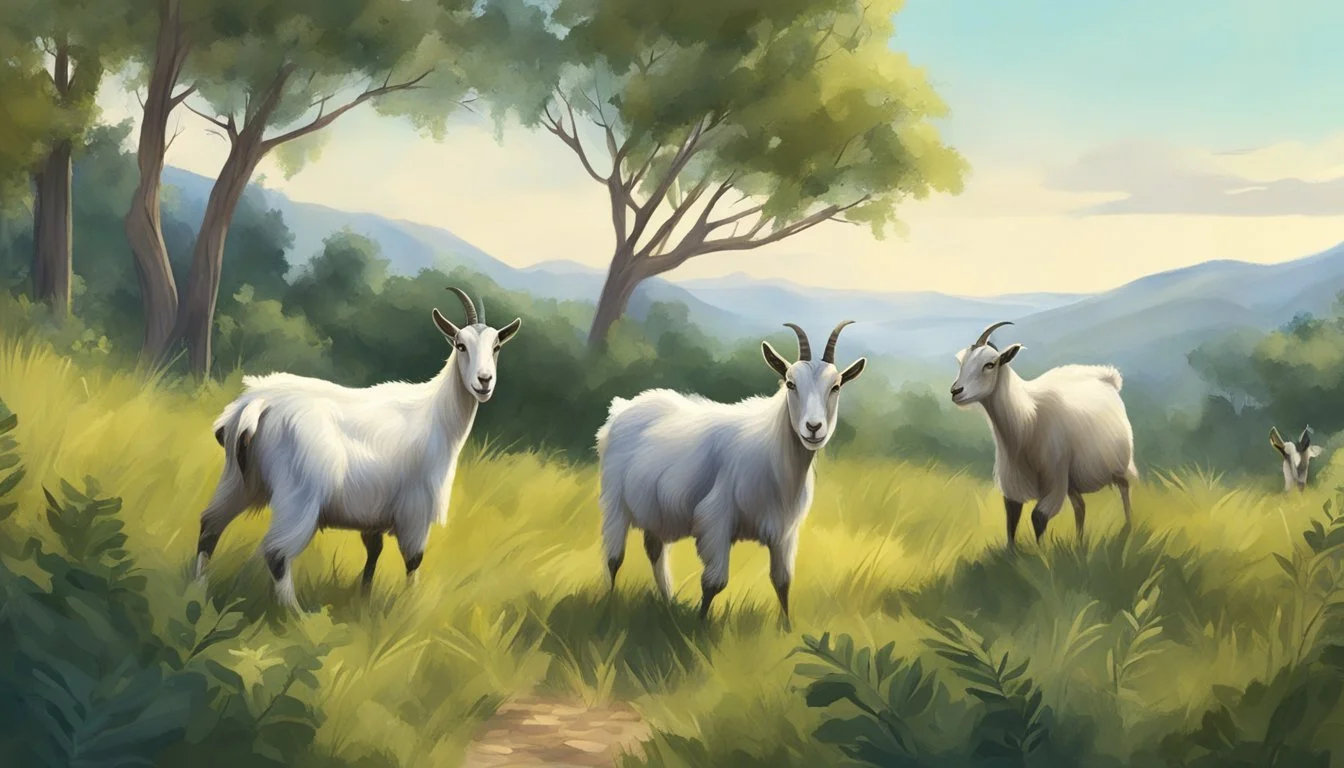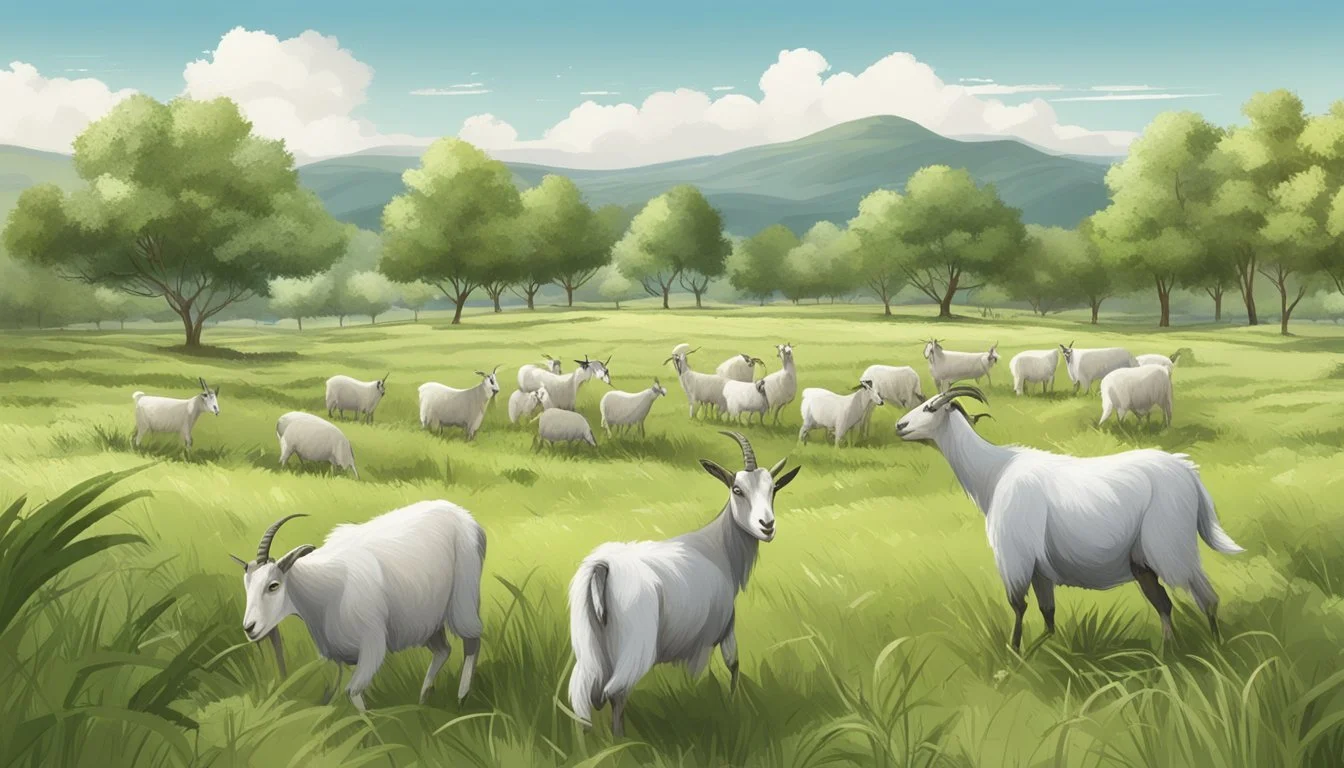Can Goats Be Used for Brush Control
Assessing Their Effectiveness in Land Management
Goats are increasingly recognized as effective agents for brush control, offering a sustainable and low-impact method to manage overgrown vegetation. Unlike mechanical means of clearing, goats consume a variety of plants, with a particular fondness for woody shrubs and invasive species, making them well-suited for this task. This method, sometimes referred to as targeted grazing, has gained popularity among farmers, landowners, and even governmental agencies looking to manage land responsibly and reduce fire hazards.
The success of goats in brush control hinges on their natural feeding behavior. Known as browsers, goats prefer to eat the tips of woody shrubs and trees, which differentiates them from grazers like sheep that favor grasses close to the ground. When goats are introduced to an area with dense brush, they work systematically, stripping leaves, bark, and stems, which can stunt the growth of unwanted vegetation and provide more opportunity for grasses and other desirable plants to thrive.
Their agility and ability to reach higher vegetation make goats particularly versatile in varying terrains where machinery may struggle or cause damage to the ecosystem. Employing goats for brush control can thus be both effective and environmentally friendly, providing a natural solution to managing land without the use of herbicides or heavy equipment.
Understanding Brush Control with Goats
Goats are a practical and eco-friendly solution for managing unwanted vegetation. Their natural browsing behavior makes them exceptionally effective at controlling brush, weeds, and even invasive species without the need for harmful chemicals.
Benefits of Using Goats for Brush Control
Using goats for clearing brush offers numerous advantages including environmental restoration and the avoidance of synthetic chemicals. Goats easily restore overrun areas by eating a variety of plants, including poison ivy, sumac, and thistle.
Goats' Diet and Brush Consumption
Goats possess a versatile diet that allows them to consume many plants that are problematic for humans to manage. They effectively clear invasive plants like spotted knapweed, vegetation resistant to grazing, such as multiflora rose, and poisonous plants that other livestock would avoid.
Goat Breeds and Brush Control Efficiency
Not all goats are equally suited for brush control. Breeds such as Spanish goats, Boer goats, Kiko goats, and Angora goats are known for their brush-clearing abilities. Each breed varies in its efficiency, diet preferences, and adaptability to different terrains.
Comparing Goats with Other Brush Management Methods
Compared to manual clearing, chemicals, and mechanized equipment, goats offer an environmentally friendly alternative. Their grazing minimizes the need for herbicides and can reduce the risk of fire by consuming potential fuel load.
Challenges in Using Goats for Vegetation Control
Goats require secure fencing to prevent escape and protect them from predators. They also need access to water and may require the care of a livestock guardian dog to deter predators. Owners must be aware of toxic plants like oleander and yew that are harmful to goats.
Integrating Goats into Vegetation Management Plans
Incorporating goats into vegetation management involves setting up a pasture rotation and managing stocking rates. Proper management ensures that goats effectively control regrowth during the growing season.
Financial Considerations for Goat Brush Control Services
Hiring goat farmers for land clearing services can be more expensive upfront but can save time and money in the long term. The costs will vary based on the number of goats needed, the size of the land, and the density of the brush.
Ecological Impact of Using Goats for Brush and Tree Management
Using goats supports environmentally friendly practices, helps maintain native species, controls invasive plants, and helps to restore ecosystems. They can also help reduce erosion and improve the soil by depositing natural fertilizer.
Case Studies and Success Stories
Successful applications of goats in brush control have been documented across different environments. Goats have proven effective in clearing hard-to-reach areas and reducing the prevalence of species like honeysuckle and willow.
Regulatory and Health Considerations for Goats in Brush Control
There may be local regulations affecting the use of goats for brush control. Health considerations include ensuring that goats do not consume toxic plants and monitoring for signs of illness or parasites.
Safety Measures and Best Practices
Safety measures for goats include installing proper fencing, ensuring access to clean water, and using livestock guardian dogs. Best practices involve knowing the types of goats best suited for the job, their dietary needs, and how to manage the vegetation effectively.
Implementation Guidelines for Brush Control
Goats can be a natural choice for managing brush and invasive species, offering a cost-efficient and eco-friendly method when compared to mechanical or chemical alternatives. Here are precise steps to implement goat-based brush control efficiently.
Preparing Land for Goat Grazing
Before introducing goats, it is critical to ensure that the land is safely enclosed. Strong fencing, such as electric fencing, is often necessary to prevent escape and protect the goats from predators. Additionally, providing sources of water within the enclosure is essential for the goats' health and well-being.
Understanding the Grazing Process
The grazing process involves calculating an appropriate stocking rate to balance the goats’ intake with the vegetation available. It is often beneficial to implement rotational grazing; moving goats through different paddocks allows for targeted brush control without overgrazing.
Monitoring and Managing Goats on the Land
Regular health monitoring is essential to prevent the spread of parasites and ensure the well-being of the goat herd. Goats require access to shade and shelter in addition to continuous monitoring to adjust fencing as needed and ensure that the animals are grazing effectively.
Post-Grazing Land Management
After grazing, it's important to assess the land for any necessary follow-up, such as reseeding to prevent regrowth of undesirable plants. Application of fertilizer may be required to promote desirable vegetation growth, and proper land management practices should continue to maintain the health of the land.
Evaluating the Effectiveness of Goats in Brush Control
To judge the effectiveness of the goats in brush control, one should look at the reduction in undesired vegetation and the health of the remaining plants. Benefits of using goats include reducing time and money spent on land maintenance while improving vegetation management and mitigating fire hazards. The evaluation should be ongoing to adapt the goat management plan for optimal results.
Conclusion
Goats have emerged as a practical and eco-friendly option for vegetation management. Their natural propensity to graze on a variety of plants, particularly those that are invasive or hard to control, positions them as a valuable asset in brush control strategies. Research indicates that using goats can mitigate fire hazards and enhance the aesthetics of the landscape.
Their advantages are numerous: they access areas where machinery cannot, they minimize soil compaction, and they are skilled at navigating steep terrains. Throughout areas like Oklahoma, initiatives have recognized goats as a tool for managing brush within firebreaks, signifying an acknowledgment of their utility in maintaining clear zones.
In terms of environmental impact, goats present a low footprint. They control brush without the need for chemical herbicides, which can be harmful to neighboring flora and fauna. Additionally, their manure serves as a natural fertilizer, enriching the soil quality.
Practical considerations for using goats include an understanding of requisite numbers and timing. Studies suggest grazing after August has little impact on brush mortality, thus timing is crucial. Moreover, while any breed can be used for vegetation management, some goats are particularly valued for their brush-clearing prowess.
In sum, when implemented correctly, goats offer a sustainable and efficient approach to vegetation management. Their effectiveness in brush control not only benefits landowners but also aligns with broader environmental goals.
Additional Resources
When researching the use of goats for brush management, a wealth of resources can guide landowners and farmers. Goat grazing has been recognized as an environmentally friendly method to control undesirable vegetation. Below are some organized resources that could help individuals learn more about this topic:
Educational Websites: The Oklahoma Department of Wildlife Conservation provides information on how goats are effective in areas where machinery can't reach and the benefits of their low-impact grazing.
Online Federations: The American Goat Federation offers insights into how goat grazing helps control weeds and mitigate fire hazards, improving the health and aesthetics of the land.
Research Studies: Extension services like the Iowa State University Extension offer research-based data on grazing patterns and the effectiveness of goats in brush and weed control.
Practical Guides: For hands-on advice, GoatFarmers.com lists practical tips for those looking to use goats to clear land and manage brush.
When implementing goat-based brush management tactics, it’s essential to consider the type of vegetation, the area's size, and the required number of goats to achieve desired results. Farmers and landowners looking to adopt this method should consult multiple sources to tailor the best practices to their specific needs and conditions.



